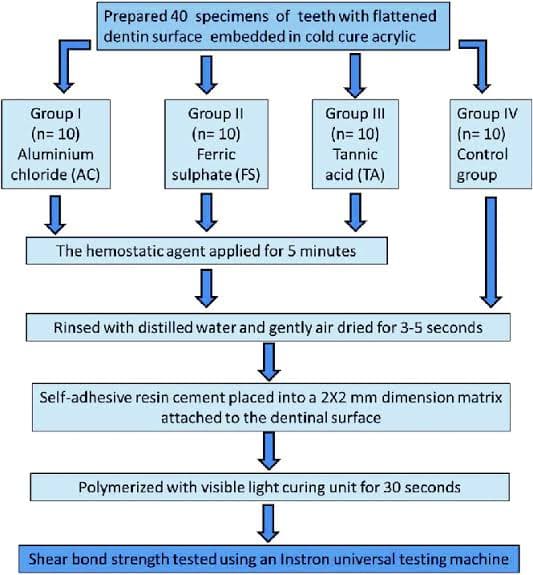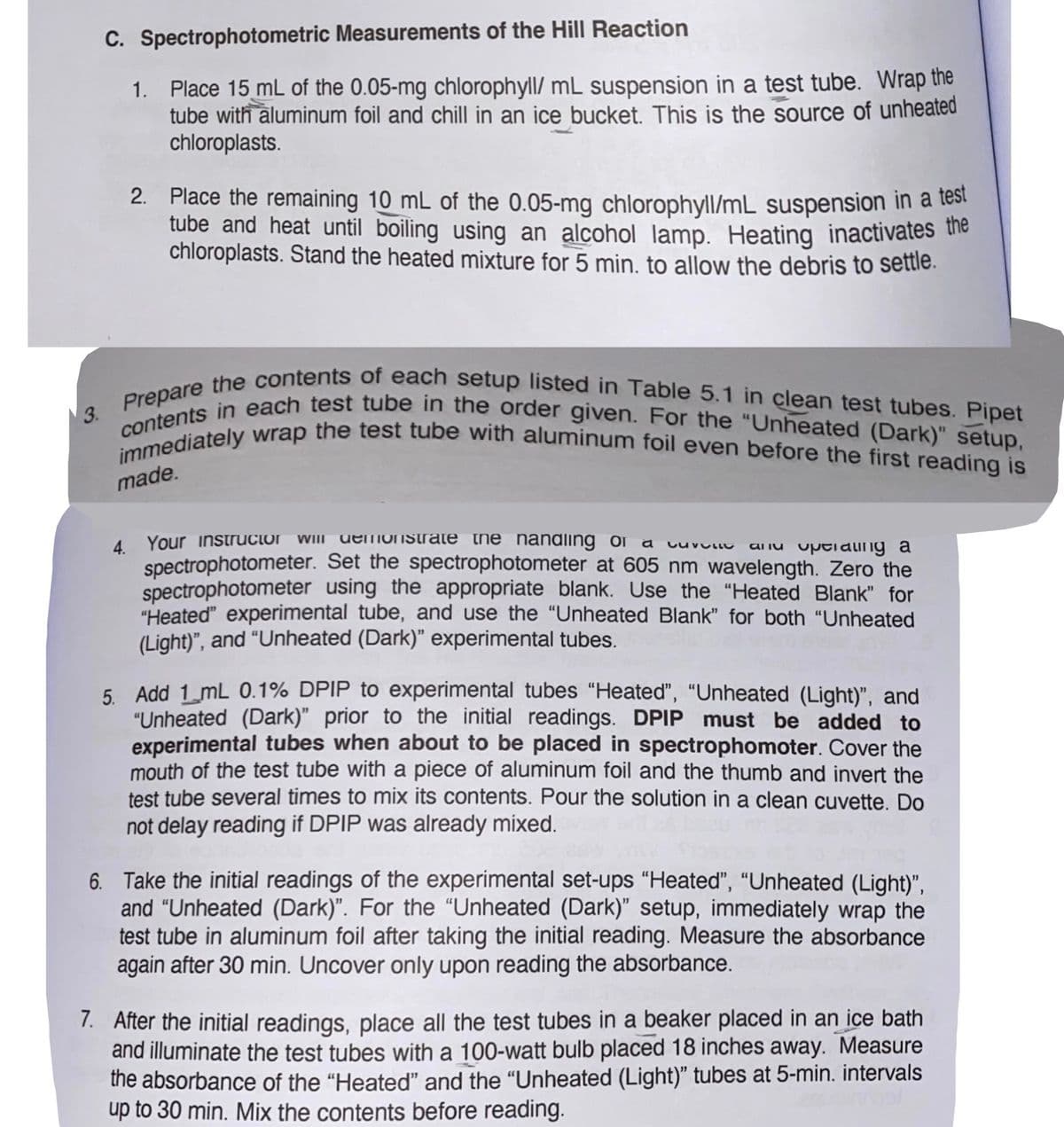Chapter8: Forms Of Drugs And How They Act
Section: Chapter Questions
Problem 30RQ
Related questions
Concept explainers
Question
Create a schematic diagram of the procedures below
(Also attached below is an example of a schematic diagram)

Transcribed Image Text:Group I
(n=10)
Aluminium
chloride (AC)
Prepared 40 specimens of teeth with flattened
dentin surface embedded in cold cure acrylic
↓
Group II
(n=10)
Ferric
sulphate (FS)
Group III
(n=10)
Tannic
acid (TA)
The hemostatic agent applied for 5 minutes
។
Group IV
(n=10)
Control
group
Rinsed with distilled water and gently air dried for 3-5 seconds
Self-adhesive resin cement placed into a 2X2 mm dimension matrix
attached to the dentinal surface
Polymerized with visible light curing unit for 30 seconds
Shear bond strength tested using an Instron universal testing machine

Transcribed Image Text:C. Spectrophotometric Measurements of the Hill Reaction
1.
Place 15 mL of the 0.05-mg chlorophyll/ mL suspension in a test tube. Wrap the
tube with aluminum foil and chill in an ice bucket. This is the source of unheated
chloroplasts.
2. Place the remaining 10 mL of the 0.05-mg chlorophyll/mL suspension in a test
tube and heat until boiling using an alcohol lamp. Heating inactivates the
chloroplasts. Stand the heated mixture for 5 min. to allow the debris to settle.
3. Prepare the contents of each setup listed in Table 5.1 in clean test tubes. Pipet
contents in each test tube in the order given. For the "Unheated (Dark)" setup,
immediately wrap the test tube with aluminum foil even before the first reading is
made.
4. Your instructor
alu Upcialing a
WIII demonstrate the nandling of a cur
spectrophotometer. Set the spectrophotometer at 605 nm wavelength. Zero the
spectrophotometer using the appropriate blank. Use the "Heated Blank" for
"Heated" experimental tube, and use the "Unheated Blank" for both "Unheated
(Light)", and "Unheated (Dark)" experimental tubes.
5. Add 1 mL 0.1% DPIP to experimental tubes "Heated", "Unheated (Light)", and
"Unheated (Dark)" prior to the initial readings. DPIP must be added to
experimental tubes when about to be placed in spectrophomoter. Cover the
mouth of the test tube with a piece of aluminum foil and the thumb and invert the
test tube several times to mix its contents. Pour the solution in a clean cuvette. Do
not delay reading if DPIP was already mixed.
6. Take the initial readings of the experimental set-ups "Heated", "Unheated (Light)",
and "Unheated (Dark)". For the "Unheated (Dark)" setup, immediately wrap the
test tube in aluminum foil after taking the initial reading. Measure the absorbance
again after 30 min. Uncover only upon reading the absorbance.
7. After the initial readings, place all the test tubes in a beaker placed in an ice bath
and illuminate the test tubes with a 100-watt bulb placed 18 inches away. Measure
the absorbance of the "Heated" and the "Unheated (Light)" tubes at 5-min. intervals
up to 30 min. Mix the contents before reading.
Expert Solution
This question has been solved!
Explore an expertly crafted, step-by-step solution for a thorough understanding of key concepts.
Step by step
Solved in 2 steps with 1 images

Knowledge Booster
Learn more about
Need a deep-dive on the concept behind this application? Look no further. Learn more about this topic, biology and related others by exploring similar questions and additional content below.Recommended textbooks for you






